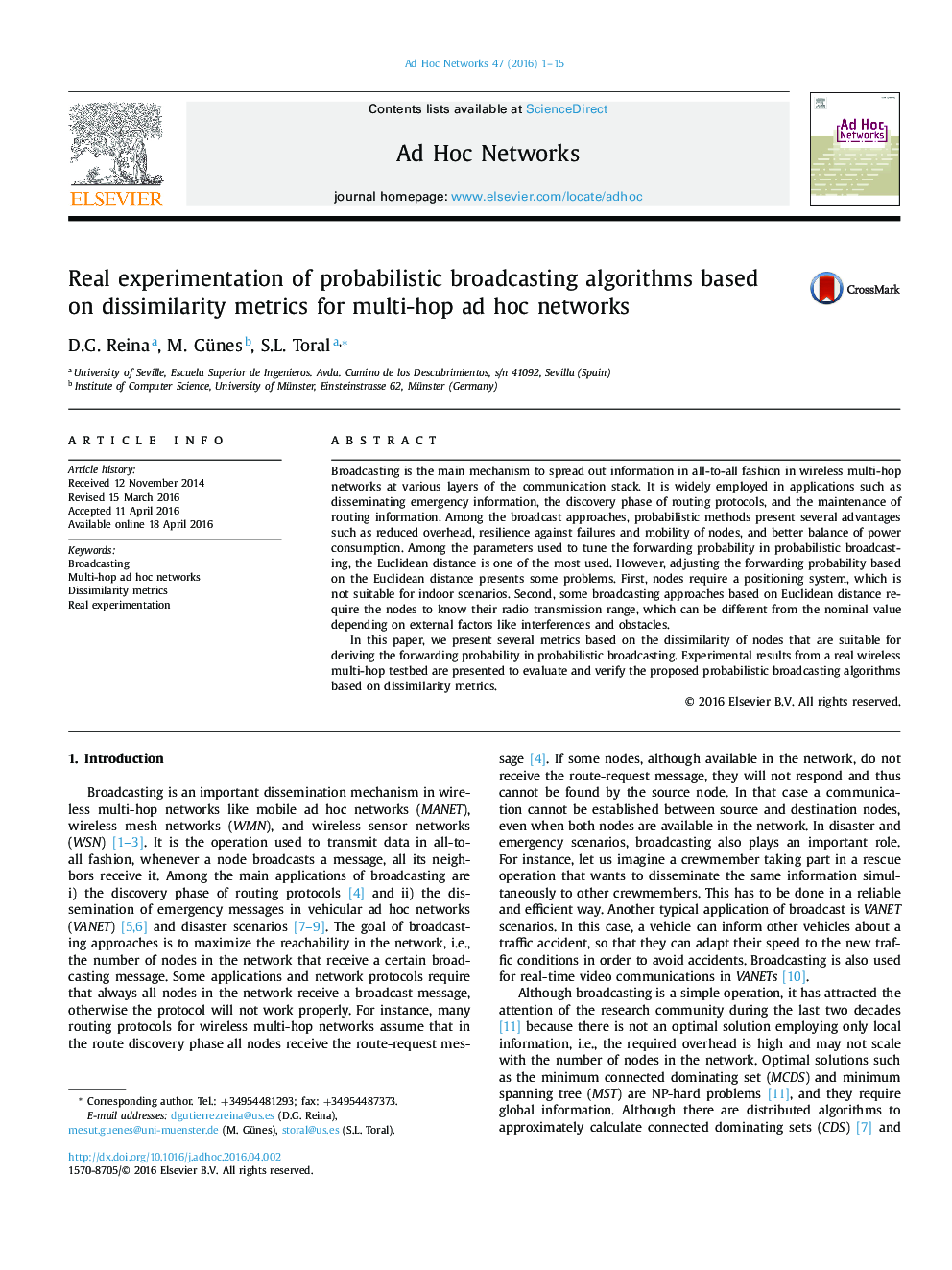| Article ID | Journal | Published Year | Pages | File Type |
|---|---|---|---|---|
| 444226 | Ad Hoc Networks | 2016 | 15 Pages |
Broadcasting is the main mechanism to spread out information in all-to-all fashion in wireless multi-hop networks at various layers of the communication stack. It is widely employed in applications such as disseminating emergency information, the discovery phase of routing protocols, and the maintenance of routing information. Among the broadcast approaches, probabilistic methods present several advantages such as reduced overhead, resilience against failures and mobility of nodes, and better balance of power consumption. Among the parameters used to tune the forwarding probability in probabilistic broadcasting, the Euclidean distance is one of the most used. However, adjusting the forwarding probability based on the Euclidean distance presents some problems. First, nodes require a positioning system, which is not suitable for indoor scenarios. Second, some broadcasting approaches based on Euclidean distance require the nodes to know their radio transmission range, which can be different from the nominal value depending on external factors like interferences and obstacles.In this paper, we present several metrics based on the dissimilarity of nodes that are suitable for deriving the forwarding probability in probabilistic broadcasting. Experimental results from a real wireless multi-hop testbed are presented to evaluate and verify the proposed probabilistic broadcasting algorithms based on dissimilarity metrics.
